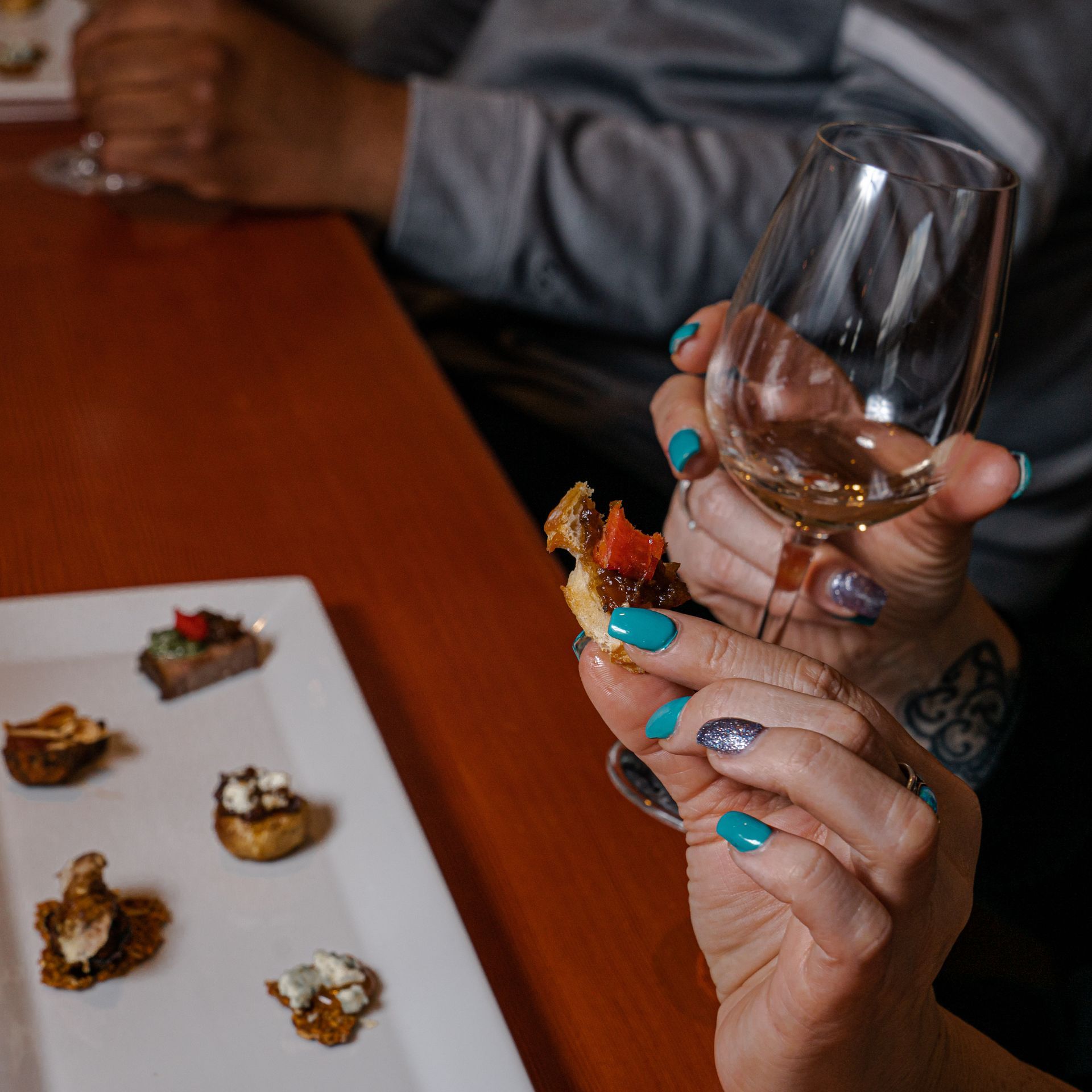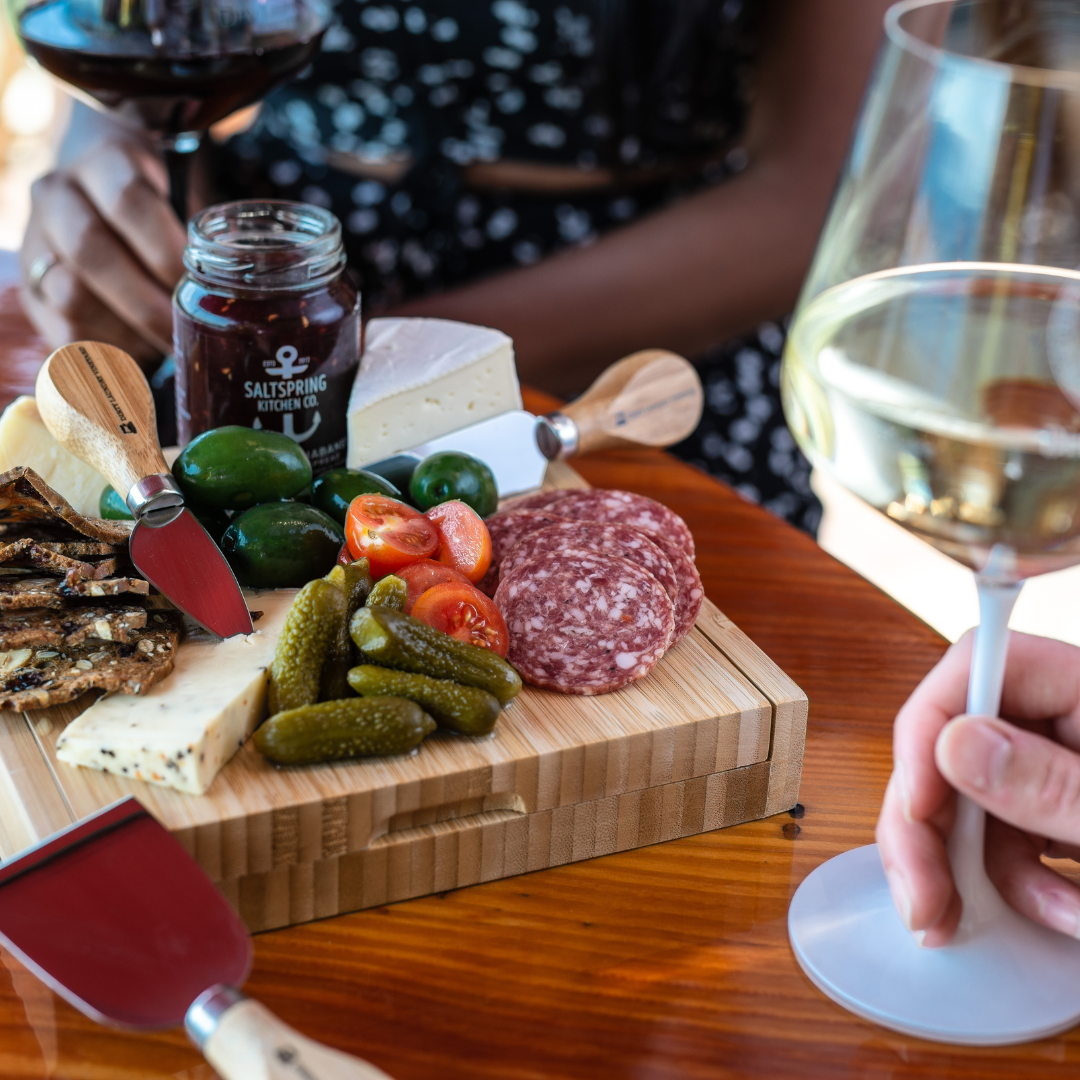Is There Any Scientific Basis to Wine and Food Pairing?
Pairing wine with food is an art that has been practised for centuries. It involves pairing the right wine with the right food to balance the flavours, creating an enhanced dining experience. Synergy between the food and the wine is the objective. The wine should complement the food and not dominate it, and the food should enhance the wine’s flavours, not overwhelm or negatively impact the taste.
There are some scientific reasons as to why a wine might heighten the experience of a meal, or detract from it. Wine is incredibly diverse and its flavours change depending on the food it is paired with. Just like a delicious fresh salmon is best paired with a light side that won’t overpower the fish, the wine you pair with the meal must balance the foods that are being served. Our taste buds adapt as we eat a sweet dish as opposed to a salty dish or an acidic dish which can alter the flavour of the wine that follows. A palette that picks up specific notes when it is tasted in isolation may identify entirely different flavours when the same wine follows a particular dish. But what are the reasons behind a harmonious food and wine pairing? Is it subjective to your specific tastes, or are there hard and fast, science-backed rules to be followed?
Here we explore the science behind pairing wine with food, and how you can use this knowledge to create the perfect wine and food pairing in your own meals, whether that’s a Tuesday night burger or a dinner party for your closest friends!

The Science Behind Wine and Food Pairing
Pairing wine with food comes down to flavour and taste. The flavour of a wine is determined by the combination of its primary taste elements—sweet, sour, salty, bitter, and umami (a savoury taste found in foods like mushrooms, soy sauce, and Parmesan cheese). The flavour of a food, on the other hand, is determined by its ingredients, cooking method, and seasoning. For example, a dish with a high fat content will taste rich, while a dish with a high acidity content will taste tart.
When it comes to pairing wine with food, there are four main traits of the wine that impact how it interacts with the flavours and tastes of the accompanying food:
- Tannins
- Sugar
- Acids
- Alcohol content
A wine with a higher sugar content will taste sweeter, while a wine with a higher acidity will taste sour, and a wine with a high tannin content will taste bitter. If you think about the four wine traits as flavour ingredients, it becomes easier to pair them with a meal.
1. Tannins
Tannins are naturally occurring organic compounds found in high concentrations in grape skins. Red wine is made using grapes that stay in contact with their skins longer during fermentation, and it is therefore much higher in tannins than white wine.
The tannins in red wine experienced in isolation can cause a sensation of dryness or astringency, and a weighty texture in the mouth which gives red wine its body and complexity. However, tannins bind to proteins, so when they are experienced alongside high fat foods such as meats and cheese, the bitter taste is softened as the tannins are pulled towards the fats and away from your tongue’s bitter taste receptors.
It can be challenging when pairing wine with food to find a food that complements the tannins in red wine. For the best experience, pair tannic red wines with rich, fatty proteins which will cut through any unpleasant bitterness in the wine, softening the tannins and creating a more harmonious pairing. The right food pairing will highlight the wine’s smooth texture, full-body, and robust flavour. Avoid a food and wine pairing where the red wine is tannic and the food is salty or acidic as this can increase the wine’s astringency.
2. Sugars
During the winemaking process, yeast is used to convert sugars into alcohol and carbon dioxide. The residual sugars are what gives wine its particular levels of sweetness. When a wine is dry, most of the sugar has converted into alcohol, whereas sweeter wines have more residual sugar, and therefore a lower alcohol content.
Pairing food and wine, especially sugary wines, requires careful consideration to balance the sweetness of the wine with the flavours of the dish. You have a couple of options when it comes to a sweeter wine. You can try to match the sweetness levels, for example, pairing a sweet dessert with a wine like a Late Harvest Riesling. Alternatively, you can pair sugary wines with dishes that are acidic, fatty, spicy, tart or salty to create a contrast and balance in flavours.
3. Acids
White wine relies more on acidity for texture, flavour and overall experience rather than the tannins found in red wine.
Acid is a crucial component of white wines, as it provides balance and freshness to the wine's flavours and can provide a refreshing, crisp finish The primary acids found in white wines (tartaric, malic, citric, and lactic acid) come from a variety of sources, including occurring naturally in the the grape, the climate in which the grapes were grown, and the winemaking process. In cooler climates, grapes tend to have higher acidity levels because the slower ripening process allows the grapes to retain more of their natural acids. During the winemaking process, the winemaker can also influence the acidity of the wine. For example, grapes may be picked earlier in the ripening process to preserve higher acidity levels, and the winemaker may use techniques such as malolactic fermentation to adjust the levels of acid in the wine.
When considering a food and wine pairing when the wine on hand is acidic, it's important to consider the acidity levels of both the wine and the dish to ensure a complementary and harmonious pairing. Acidic wines tend to be bright and crisp, and can overwhelm delicate flavours. Pair them with foods that can stand up to their intensity and try to match the acidity levels of the wine and the dish. For example, pair acidic wines with salads with vinaigrette dressings, seafood with lemon or vinegar-based sauces, and rich or creamy dishes like risotto or pasta with cream sauce.
4. Alcohol
Alcohol is the outcome of the fermentation process and it plays a huge role in the resulting weight and body of the wine. Generally speaking, red wines have higher alcohol levels than whites because the grapes are harvested later, making them riper with a higher concentration of sugar for the yeast to convert into alcohol.
A high-alcohol wine and food pairing can be challenging because the high alcohol content can overpower the flavours of the food. High alcohol wines are often full-bodied and intense in flavour, so they pair well with bold, flavourful dishes that are high in fat that can stand up to their intensity. This will create a balanced pairing where the flavours of the wine and the food complement each other. Keep in mind that high alcohol wines can become more alcoholic and hot on the palate when paired with spicy or acidic foods.

What Are The Basic Rules Of Wine And Food Pairing?
Now that we know that there is science behind pairing wine with food, what are some of the rules that should be followed when trying to choose the perfect wine to complement a meal?
If you’re busy and don’t have time to think too much about the science behind your food and wine pairing, you can always fall back on the basic premise of ‘white wine goes with chicken and fish’ and ‘red wine goes with meat (beef, pork, duck, venison, lamb). However, wine experts believe that these specific rules will create the most harmonious combination of flavours when pairing wine with food:
- Wine and food pairing tip #1: The wine should always be sweeter than the food. If not, the sweetness of the food will overwhelm the flavour of the wine and it can seem flavourless. Think of how sweet a dessert wine is. It’s necessary to compete with the sweetness of the dish. A wine with some sweetness can also balance a spicy dish. Dirty Laundry’s Madam’s Gewurztraminer is one of our popular whites that is more on the sweet side with 12g residual sugar per litre.
- Wine and food pairing tip #2: The body of the wine should match the food. A thick winter stew or a rich cut of red meat with creamy mash potatoes pairs better with a full-bodied, robust red such as our Bordello rather than one that is lighter like our Hush Red which would pair better with a less-hearty dish such as quinoa veggie burgers. A full-bodied Chardonnay can pair well with a creamy pasta dish or a rich seafood bisque. A delicate, light white wine, such as a Pinot Gris, Sauvignon Blanc, or Riesling would pair perfectly with grilled seafood, salad, or poultry.
- Wine and food pairing tip #3: The wine should be more acidic than the food. You can match tart or sour food with a high-acid wine, or you can balance it with a wine that has sweetness. Fish or chicken ideally should be served with a high-acidity wine to cleanse the palate between bites as opposed to a red wine with tannins that cancels out the fattiness of the fish, leaving a residual fishy flavour.
- Wine and food pairing tip #4: The wine should have the same flavour intensity as the food. If either the food or wine is much stronger than the other, the weaker item will get overwhelmed.
- Bold-flavoured, rich meats such as a grilled ribeye steak pair best with a similarly rich wine. This could be a red wine such as Dirty Laundry’s Kay Syrah, Cabernet Sauvignon or Merlot, but even a full-bodied Chardonnay would stand up to the flavours.
- Lighter-intensity meals such as crab legs and prawns, lighter pasta dishes, grilled or poached white fish would pair well with a lighter white wine such as Dirty Laundry’s Riesling. Sommeliers love Riesling as it can be high-acid, somewhat sweet, and very versatile, able to pair with many different types of dishes.
Is Pairing Wine with Food an Art or a Science?
Ultimately, the science of food and wine pairing is understanding the flavour profile of a dish and the components of a wine, and then determining how the acids, fats, sugars, spices, alcohols and tannins will interact to make an informed pairing decision. It might sound overwhelming, but at the end of the day, it’s your taste buds and personal preference, and no one can tell you what is right and wrong for you when it comes to your chosen food and wine pairing. Don’t be afraid to experiment and pairings that you enjoy, even if they go against the grain. The subjective nature of taste makes it possible to drink almost any kind of wine with any kind of food and have an enjoyable experience.


